
© Johan Persson. (Click image for larger version)
Rambert
Murder, Mystery & a Party: Terra Incognita, Tomorrow, A Linha Curva
★★★★✰
London, Sadler’s Wells
10 May 2016
Gallery of A Linha Curva pictures by Foteini Christofilopoulou
Gallery of Terra Incognita pictures by Foteini Christofilopoulou
www.rambert.org.uk
www.sadlerswells.com
The centrepiece of this richly diverse programme was a dance puzzle, perhaps broadly equivalent to a game of three-dimensional chess. The world premiere of Lucy Guerin’s Tomorrow (interview) certainly came with the challenge of extra layers.
A large, rectangular block divided the stage throughout much of the work. Suspended on wires, lowered and raised, mostly it hung, mid-air, as a barrier between the two sides of Guerin’s ongoing exploration of ideas influenced by Macbeth. On one side, seven performers in black mimed literal fragments of the play, in reverse, like a DVD on rewind in real-time but liberally skipping through scenes to key moments of action; on the other, seven dancers – both guys and girls – wearing off-white, ragged gowns, represented the witches – Shakespeare’s ‘weird (or wayward) sisters’ – in an abstract account of the dark, expressionist themes in the Scottish play.
In Shakespeare’s folio, the witches’ early appearance in Act I accompanies the text ‘Fair is foul, and foul is fair…’ and it is this moral deviation that appears to drive Guerin’s narrative intent. Combining simultaneous visual stimuli of both literal and psychological references to Macbeth sets a clever and intriguing challenge. And, not just for the audience since it is a fascinating continuation of Guerin’s deconstructional approach to dance theatre that the performers on the two sides switch over, exactly, for the second cast.

© Johan Persson. (Click image for larger version)
Although Tomorrow was a world premiere at this show, it is also an extension of ideas and recurring themes from Guerin’s recent collaboration with Carrie Cracknell to make Macbeth for the Young Vic, which ran over the winter season, just passed. And, in a sense, this is a further deconstructional dimension – a sequel to a sequel – since one inevitably feels that something has come before this work that most of us can only guess at. It’s like Trisha Brown having her dancers perform in the wings or behind a curtain. It stretches minds to imagine the things eyes have not seen.
The downside is definitely the “play side” because the witches have all the energy. They twitch and judder like extras from The Walking Dead; twisting and shaking to the electronic pulses of Scanner’s bespoke score, the heavy bass notes enlivening the steel structure of the Sadler’s Wells auditorium with uncomfortable reverberation. These dancers bounce with a determined mania; their movement cackles and implies wide eyes and salivation. There may be seven dancers but there is – true to Shakespeare – a triumvirate of t/witchiness that shouts out from the stage in the particular expressionism of Miguel Altunaga, Hannah Rudd and Simone Damberg Würz.
When Shobana Jeyasingh’s Terra Incognito had its own world premiere, on this same stage, back in November 2014, I felt that it suffered from appearing last on a challenging programme. Perhaps, Rambert’s Artistic Director, Mark Baldwin, felt the same since this first revival sees it open the show and it is all the better for it. At one long stretch of 35 minutes it demands a fresh mind and I saw many subtle nuances – some, for the first time – in Jeyasingh’s multi-faceted movement vocabulary that conjured images of exploration, oceans and storms to gel with the implied theme of journeys to an unknown land (terra incognita).
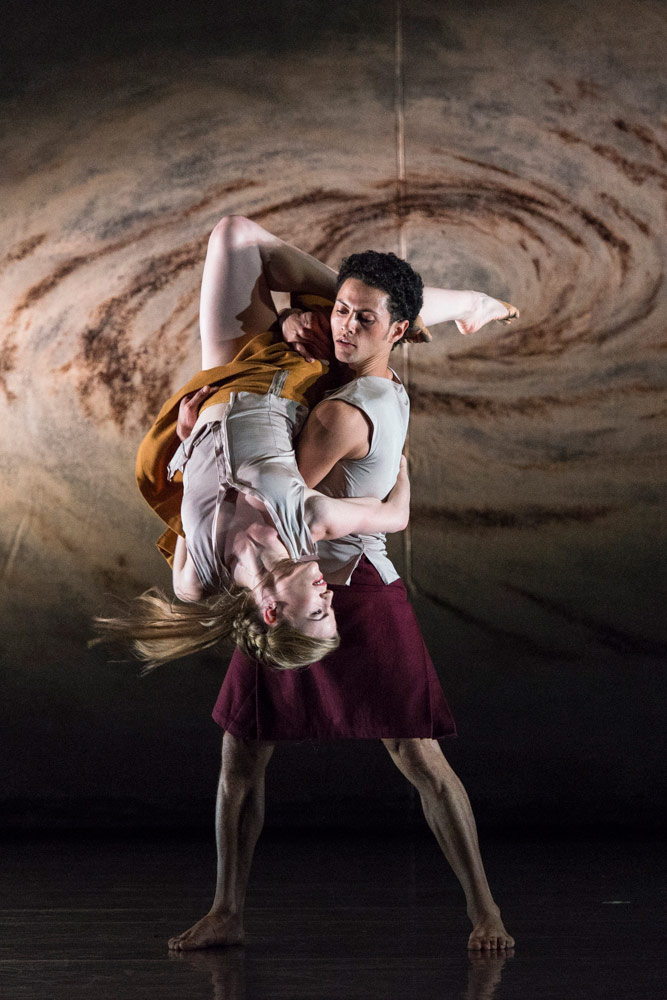
© Foteini Christofilopoulou. (Click image for larger version)
Gabriel Prokofiev’s challenging score also benefitted from a repeat hearing, in this new, pole position, and – 18 months’ on from the premiere – it seemed now to sit with equal merit alongside Lucy Carter’s descriptive lighting and Jean-Marc Puissant’s strong designs, both in colourful, moveable set panels and the pleated kilts worn by the five male/female pairs of dancers.
Perhaps it spills out of Jeyasingh’s focus on ancient and uncharted worlds but the obvious theme of a journey appears to be linked to more subtle referencing of power and politics in such a way that I could not but help think of Game of Thrones. An allusion enhanced by Damberg Würtz’s striking physical similarity to Gwendoline Christie’s portrayal of the chivalric female knight, Brienne of Tarth. If she ever needs a sister for a future storyline then the GoT casting team should look up Rambert’s number.
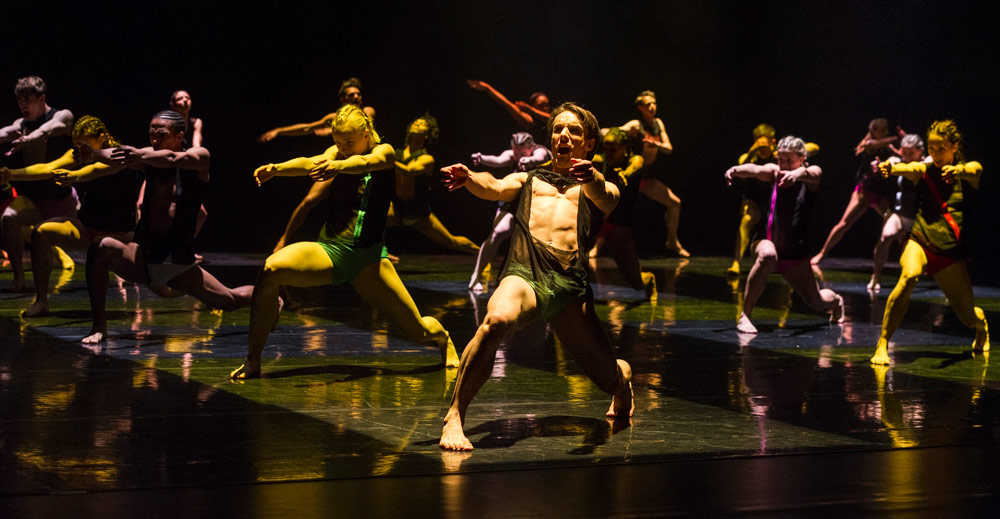
© Foteini Christofilopoulou. (Click image for larger version)
Switching Terra Incognita to open meant that Itzik Galili’s tub-thumping, barnstorming Latin fiesta – A Linha Curva – went in the only place possible for a work of such gaiety. This show had no need of an after-party because it had already happened on the stage. Fuelled by the infectious rhythms of four percussionists – playing live from a downstage raised platform – and making as much foot-tapping noise as the whole cast of Stomp, A Linha Curva is a riot of colour and sensuality. But, it’s a disciplined pandemonium, where the teeming movement is closely aligned to controlled geometric patterns.
First performed in 2009, Galili seems to have hit upon a work that is also a cipher – maybe even, a signature – for this unique company (Britain’s oldest, celebrating its 90th year in 2016). Not only is Galili’s joyful work just perfect as a celebratory party piece, but the equality of movement for the 28 dancers (the whole company plus some student guests) represents the refreshing lack of hierarchy in this congruent group.
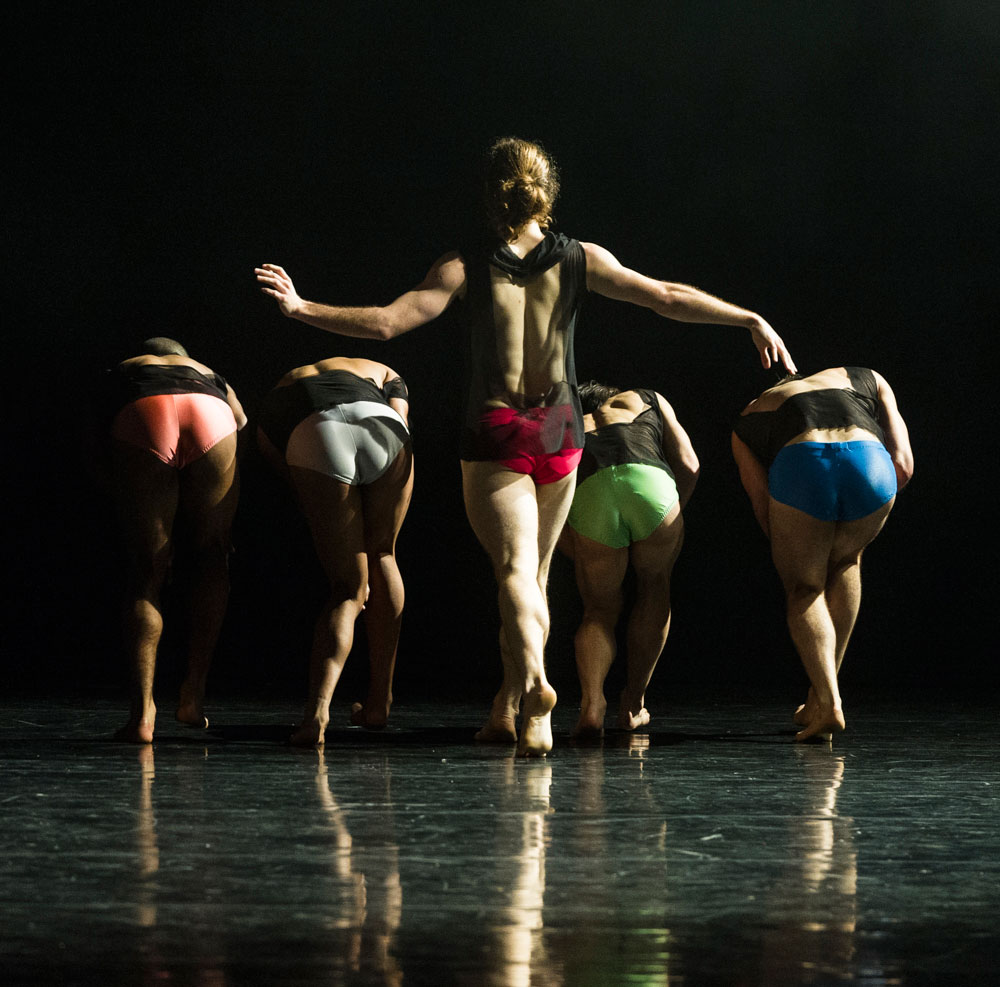
© Foteini Christofilopoulou. (Click image for larger version)
Outstanding dancers have moved on from Rambert in recent years with no detrimental effect on an ensemble that remains as illustrious as ever. Amongst the newer intake, Joshua Barwick, Carolyn Bolton, Daniel Davidson (a striking “twin” for Damberg Würtz), Liam Francis and Jacob O’Connell (well remembered from last year’s BBC Young Dancer competition) made distinct impressions across the three works. I guess that you could easily make a great Rambert v2 out of excellent dancers that are unemployed but these young people are making the most of a wonderful opportunity.













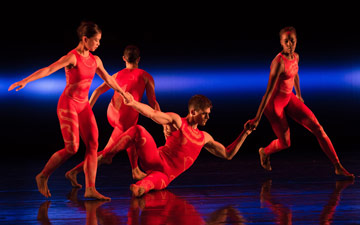

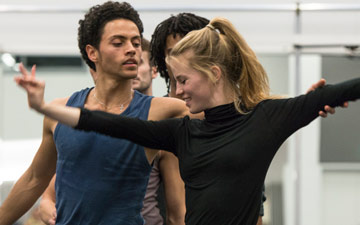

I’m new to DanceTabs. Do you send videotapes of entire works?
I’m afraid not.